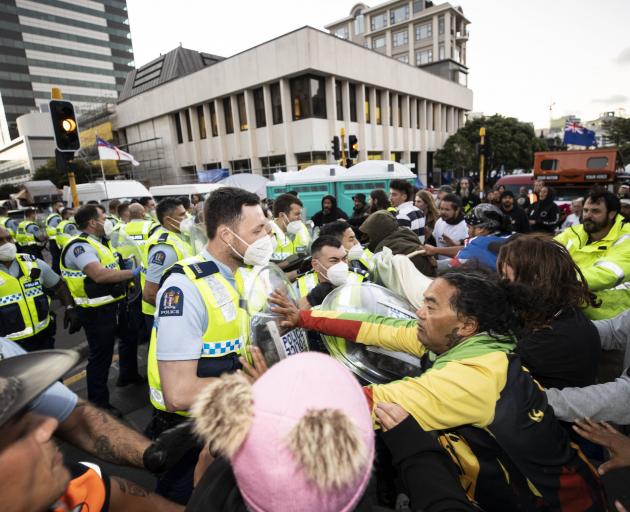
It’s about ego, and the belief we know best. Such judgements of others’ efforts can be made easily from a position of safety, when nothing is riding on that decision, and with little of no awareness of all the ins and outs, and nuances, of the situation.
So it is with the performance of the police as the protest grinds on into the start of its third week in the precincts around Parliament. We all appear to know better and know exactly what we would do to resolve matters.
Back in the real world, it is best to leave things to the fully trained professionals and those with years of experience, rather than to the experts in their armchairs — a comfortable place from which to order a baton charge or the dispersal of teargas among the crowd while sipping Earl Grey and munching on gingernuts.
Patience is clearly running out with the occupation and the schisms within the protest group are becoming easier to see.
The right to protest peacefully is one of our society’s great freedoms. As long as protesting does not impede the rights of others to exercise their freedoms of living, working and playing, then it should be tolerated — by us, by police and by the powers that be.
There may be some at this demonstration who believe in peaceful, but it is becoming patently obvious there is a core of hardline and dim-witted extremists who are quite prepared to act illegally, put lives at risk and go on wrecking the livelihoods of many locals.
In the end, this rift among protesters may well be what causes the whole movement to implode, along with the hypocrisy of setting up an apparently halcyonic society in which there is no censorship but also no free media.
The public’s view of how the police have dealt with the protest over the past fortnight has waxed and waned like the sound of an approaching siren.
After more than 100 arrests on day three of the event, the police appeared to back off during subsequent days and become mere observers, as numbers continued to grow despite a thrashing from former tropical cyclone Dovi.
“Where is the leadership?”, people were asking, not only from police but from the Government, which, with the exception of Speaker Trevor Mallard and his irrigation and musical efforts, has been largely invisible. Particularly notable for her absence has been Police Minister Poto Williams.
The same applied to Police Commissioner Andrew Coster, who only appeared publicly on the scene late last week, saying police were monitoring the situation and would do nothing to inflame events.
Mr Coster then underwent a robust interview experience with Q+A’s Jack Tame on Sunday, explaining there was a way to police this without violence, using a traffic management system, and stating the Government still had confidence in him.
In the days since, we have commendably seen a tougher stance from frontline police, with concrete barricades put in place that only allow protesters out, not in, and the cracking down on bad behaviour.
Yesterday, Prime Minister Jacinda Ardern reiterated her view that peaceful protesters should leave now. That came after violence between some protesters and police, and other aggression from activists, including driving a car and throwing human waste towards police, and squirting them with a liquid believed to be an acid.
There are fashions in policing as in most things. Nobody wants to see a return to the police brutality exhibited during the 1981 Springbok Tour and the ending of the Bastion Point occupation in 1978. Those marked the nadir of policing in New Zealand.
But it would be fair to say most New Zealanders would now tolerate a degree of force being used to remove the dangerous troublemakers outside Parliament.












